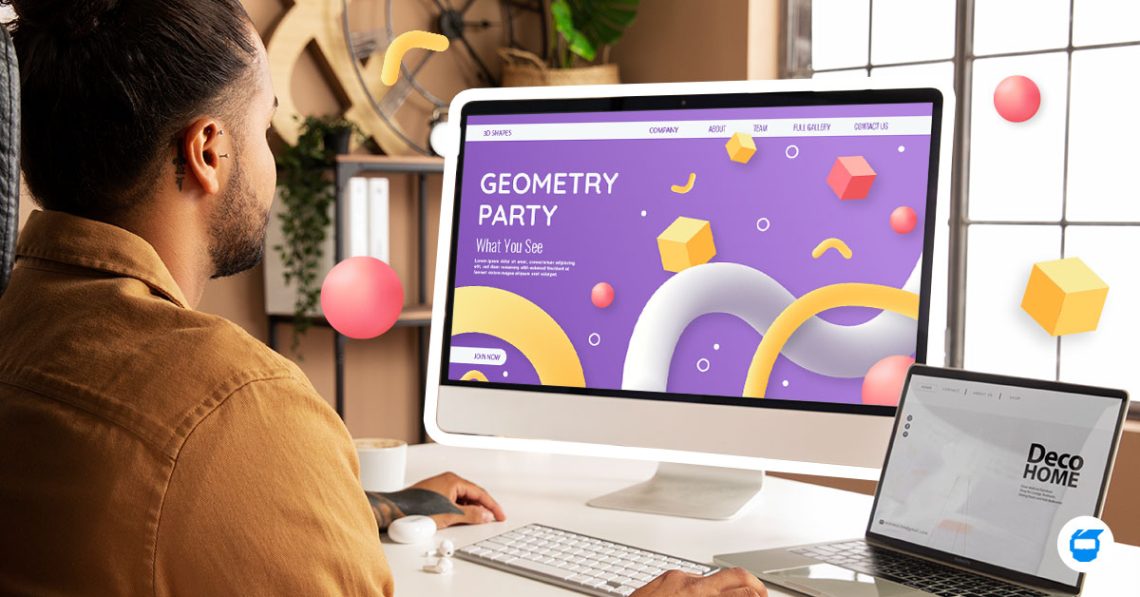The world of web design is constantly changing, and one of the latest trends making waves is 3D graphics and effects. These cutting-edge techniques are revolutionizing the way we experience websites, bringing them to life like never before.

Table of Contents
- What Exactly is 3D in Web Design?
- The Evolution of 3D in Web Design
- WebGL for Web Design
- Accessibility and Compatibility
- Integrating 3D Effects with CSS and JavaScript
- Why 3D Graphics Matters for Your Website
- Practical Applications of 3D in Web Design
- Keeping Performance in Check
- The Future of 3D Web Design
What Exactly is 3D in Web Design?
Gone are the days of static, two-dimensional websites. The emergence of 3D technology has introduced a new dimension of depth and interactivity into the web design sphere. With advancements in browser capabilities and rendering engines, combining 3D elements into web interfaces has become more accessible than ever before.
Simply put, 3D graphics in web design involve adding three-dimensional elements to websites. Instead of flat, static images, 3D graphics create depth and realism, making websites more visually appealing and interactive. It’s like adding a whole new dimension to your online presence.
The Evolution of 3D in Web Design
The journey of 3D graphics in web design has been nothing short of remarkable. From its humble beginnings as a niche technique used primarily in gaming and animation, 3D has now become a mainstream feature in web development. With advancements in technology and browser capabilities, web designers have more tools at their disposal than ever before to create stunning 3D experiences.
WebGL for Web Design
Now, you might be wondering how to bring 3D to your website. That’s where WebGL comes in. WebGL, short for Web Graphics Library, is a powerhouse technology that makes 3D graphics possible in web browsers. It’s a JavaScript API that enables high-performance rendering of 3D graphics. Think of it as the engine under the hood, transforming code into extraordinary visuals that users can interact with in real-time.
Accessibility and Compatibility
One of the most exciting aspects of 3D in web design is its increasing accessibility and compatibility across different platforms and devices. Thanks to technologies like WebGL and CSS3D, 3D graphics can now be seamlessly integrated into websites without the need for plugins or special software. This means that users can enjoy immersive 3D experiences regardless of their device or browser, opening up new possibilities for engagement and interaction.
Integrating 3D Effects with CSS and JavaScript
But what if you’re not a coding expert? You can still dip your toes into the world of 3D using familiar tools like CSS and JavaScript. With CSS, you can add simple 3D effects to elements on your website, like rotating images or moving text. JavaScript libraries like Three.js make it even easier to create more complex 3D scenes without writing tons of code.
Why 3D Graphics Matters for Your Website
Adding 3D elements to your website isn’t just about making it look cool (although that’s a big part of it!). It’s also about engaging your audience in new and exciting ways. Whether you’re showcasing products, telling stories, or providing interactive experiences, 3D graphics can help you stand out from the crowd and keep visitors coming back for more.
Practical Applications of 3D in Web Design
Beyond just adding visual flair, 3D graphics and effects serve a variety of practical purposes in web design. For example, they can be used to create interactive product showcases, allowing users to explore items from different angles and perspectives. 3D maps and virtual tours are another popular application, providing users with immersive experiences that feel like they’re actually there.
1. Interactive Product Showcases
Allow users to explore products from all angles, zoom in for close-ups, and interact with features in a virtual environment.
2. Virtual Tours and 360-Degree Views
Provide immersive experiences by allowing users to navigate through virtual spaces, such as real estate properties, tourist destinations, or museum exhibits, using 360-degree panoramic views.
3. Gaming and Interactive Experiences
Create engaging games or interactive storytelling experiences that transport users to fantastical worlds and challenge their skills or knowledge.
4. Architectural Visualization
Showcase architectural designs, interior layouts, and urban planning projects in a realistic 3D environment, allowing clients to visualize concepts before construction begins.
5. Educational and Training Simulations
Simulate real-world scenarios for educational purposes, such as medical simulations, flight training, or safety drills, providing a hands-on learning experience.
6. Data Visualization
Present complex data sets in a visually engaging manner, using 3D graphics to illustrate trends, relationships, and patterns in an intuitive and interactive way.
7. Augmented Reality (AR) and Virtual Reality (VR) Experiences
Integrate AR and VR technologies to blend virtual content with the real world or immerse users in fully virtual environments for gaming, training, or entertainment purposes.
Related: What is Augmented Reality (AR)? Its Impact on Web Design
Keeping Performance in Check
Of course, it’s important to remember that with great power comes great responsibility. Complex 3D scenes can be heavy on resources and may slow down older devices or browsers. To ensure a smooth experience for all users, optimize your 3D models, minimize unnecessary rendering, and prioritize performance at every step of the design process.
The Future of 3D Web Design
As technology continues to evolve, the possibilities for 3D in web design are endless. From augmented reality to virtual reality and beyond, the future is bright for those willing to explore the cutting edge of web technology. Indeed, 3D graphics and effects are revolutionizing the way we experience the web, offering a new level of engagement and interactivity.
Looking for web designer for your business? Contact us today, and we’ll be glad to assist you!

